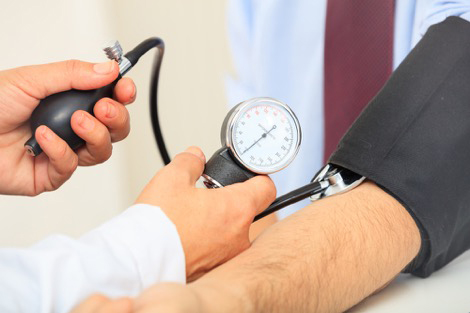Cardiovascular Disease: Increments Of Systolic BP Above 90 Mm Hg Correlates With Corresponding Risk Increase Of Atherosclerotic Cardiovascular Disease (ASCVD)
Source: Cardiovascular Disease: Disease Jun 18, 2020 5 years, 5 months, 2 weeks, 6 days, 21 hours, 47 minutes ago
Cardiovascular Disease: A recent study in the journal JAMA Cardiology has suggested that even a normal systolic blood pressure (SBP) of 90 mm Hg is not good enough.
https://jamanetwork.com/journals/jamacardiology/article-abstract/2766469
.jpg)
Based on the study findings, there appears to be a stepwise increase in the risk of atherosclerotic cardiovascular disease (ASCVD) beginning at an SBP level as low as 90 mm Hg.
Significantly cardiovascular risk continues to reduce as systolic blood pressure decreases right down to levels as low as 90 mm Hg, the new study has shown.
Dr Daniel W. Jones from the Department of Medicine, University of Mississippi Medical Center, Jackson, commented on the research findings, "These new findings support the position that risk imposed by blood pressure level begins well below the current 130/80 mm Hg definition of hypertension and guideline-recommended goal.”
Professor Dr Seamus P. Whelton from Johns Hopkins Ciccarone Center for Prevention of Cardiovascular Disease, Baltimore, Maryland, and fellow researchers from various universities and institutions conducted the study to examine the association of SBP levels with coronary artery calcium and ASCVD in individuals without hypertension.
Dr Wheltom said, "These results highlight the importance of primordial prevention for SBP level increase and other traditional ASCVD risk factors, which generally seem to have similar trajectories of graded increase in risk within values traditionally considered to be normal.”
In the research, the study team deployed a cohort of 1457 participants free of ASCVD from the Multi-Ethnic Study of Atherosclerosis who were without dyslipidemia (low-density lipoprotein cholesterol level ≥160 mg/dL or high-density lipoprotein cholesterol level <40 mg/dL), diabetes (fasting glucose level ≥126 mg/dL), treatment for hyperlipidemia or diabetes, or current tobacco use, and had an SBP level between 90 and 129 mm Hg. The study also excluded patients receiving hypertension medications.

Coronary artery calcium was classified as absent or present and adjusted hazard ratios (aHRs) were calculated for incident ASCVD. The study was conducted from March 27, 2018, to February 12, 2020.
Main findings of the study include:
1. There was an increase in traditional ASCVD risk factors, coronary artery calcium, and incident ASCVD events with increasing SBP levels.
2. The aHR for ASCVD was 1.53 for every 10-mm Hg increase in SBP levels.
3. Compared with persons with SBP levels 90 to 99 mm Hg, the aHR for ASCVD risk was 3.00 for SBP levels 100 to 109 mm Hg, 3.10 for SBP levels 110 to 119 mm Hg, and 4.58 for SBP levels 120 to 129 mm Hg.
The researcher conclude that beginning at an Systolic Blood Pressure (SBP) level as low as 90 mm Hg, there appears to be a stepwise increase in the presence of coronary artery calcium and the risk of i
ncident ASCVD with increasing SBP levels. These results highlight the importance of primordial prevention for SBP level increase and other traditional ASCVD risk factors, which generally seem to have similar trajectories of graded increase in risk within values traditionally considered to be normal.
For more about
cardiovascular diseases and
atherosclerosis, keep on logging to Thailand Medical News.
.jpg)
